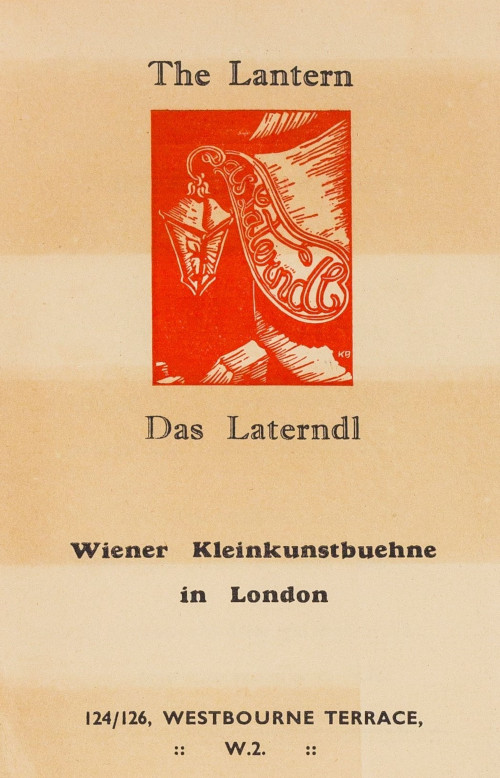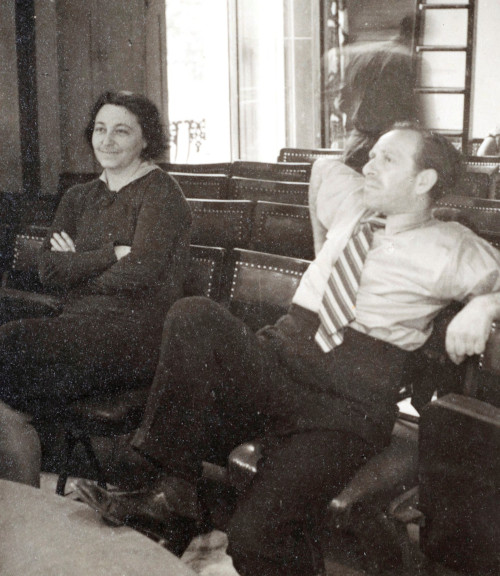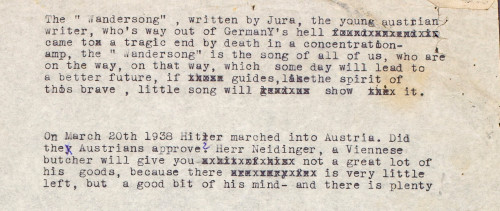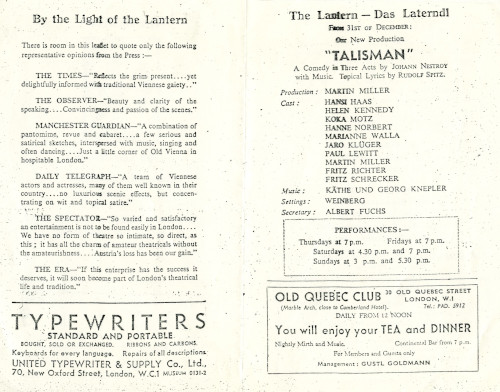Archives Hub feature for March 2022
For the 30,000 traumatised refugees from Nazi-occupied Austria living in the UK at the start of the Second World War, the Austrian exile theatre the Laterndl was a beacon of light and hope during the dark days of the Third Reich. Refugees were living with the loss of their homes, the uncertain fate of families left behind, and the poverty and isolation of exile life. At the theatre they could laugh, weep and mourn together over stories, music and poetry presented by performers who shared the same experiences. For the artists themselves, the theatre allowed them to escape the daily grind of refugee life, provide a home for Austrian culture and contribute to the fight against Nazism.
Members of the Research Centre for German and Austrian Exile Studies at the University of London have begun to piece together the history of the theatre using the papers of Austrian Jewish refugees Martin Miller and Hannah Norbert Miller, key figures at the Laterndl. Their papers are one of a growing number of archives of German-speaking exiles held at Senate House Library on behalf of the Institute of Modern Languages Research. A programme to catalogue and promote the collections has been funded in recent years by the Martin Miller and Hannah Norbert Miller Trust and the records have now been added to the Archives Hub. This feature for the Hub marks Women’s History Month by considering the role of women in the theatre and how they contributed to its aim to keep alive the spirit of resistance to the Nazis.
Five of the 16 artists who contributed to the opening production of the Laterndl in June 1939 were female artists, all experienced professionals. They played an important role both on stage and behind the scenes from the offset. The cast of the first production ‘Unterwegs’ included seasoned theatre performers Lona Cross, Marianne Walla and Greta Hartwig. Cross had performed in regional Austrian theatre and Walla and Hartwig were active in anti-fascist political cabaret in Vienna in the mid-1930s. ‘Unterwegs’ offered a wide range of strong female roles and included one scene, ‘Bow Street’ which was singled out for particular praise by reviewers. Standing on trial at Bow Street court before ‘General Bias’ and ‘Mrs Charity’, Walla, playing the ‘Eternal Woman’ alongside the ‘Eternal Jew’ and the ‘Eternal Revolutionary’, made a powerful plea for leniency and understanding from the British authorities for women who had taken a stand against Nazism.
In early 1940 another Viennese actor already familiar to Austrian theatre audiences joined the troupe, Hannah Norbert Miller (then Hanne Norbert). Norbert soon became one of the leading performers, appearing in over ten productions in three years. She also acted with other exile theatre groups and had a wide network of contacts which helped connect the Laterndl players with the wider German-speaking theatre scene. Norbert’s excellent English enabled her to act as commere, communicating the theatre’s message of resistance against Nazism to British audience members, who included well-known cultural figures like J.B. Priestly and Richard Crossman of the BBC.
Theatre programmes in the archive indicate that female artists also worked in a range of non-acting roles over the course of the theatre’s existence. Kaethe Knepler was a musician and pianist from Germany who worked as director of music at the Laterndl in 1941 and 1942 together with her husband, Georg, a musicologist. The couple regularly performed as a duo, and in 1940 Kaethe Knepler composed the setting for a song by Jura Soyfer, a young Austrian writer who had died in Buchenwald a year before.
Costumes for the first three productions were the responsibility of two Viennese designers, Hertha Winter and Kaethe Berl. Little is known about Winter’s background, but Berl had studied design at art school and in the post-war era she would became a pioneer in enamel art in New York. With wartime shortages and the Laterndl’s tiny budget, the pair had to summon all their creativity to produce costumes, improvising them out of old garments or purchasing them cheaply here and there, including in the East End’s Petticoat Lane. Berl also designed the distinctive red logo for the theatre shown on the programme (above).
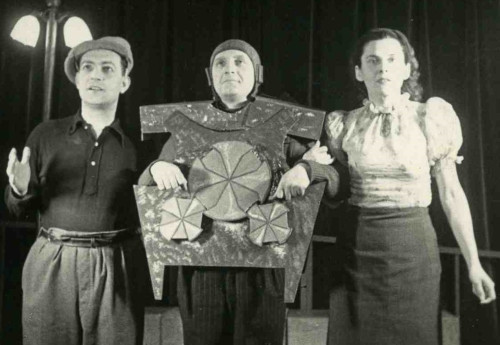
One of the most powerful anti-Nazi plays produced by the Laterndl was written by the theatre’s only female writer, journalist and Communist activist Eva Priester. Priester’s ‘The Verdict’, performed in the autumn of 1942, saw Norbert and Walla play two women imprisoned in a cell together in an unknown location in Nazi Europe. The women unite against their male guard and anticipate the liberation of Europe with the declaration: ‘We are not alone. They will come over the sea, by ship, any moment now they could come and land in France and open our doors. Can you hear them – soon they will break down the iron doors – soon they will be here!’
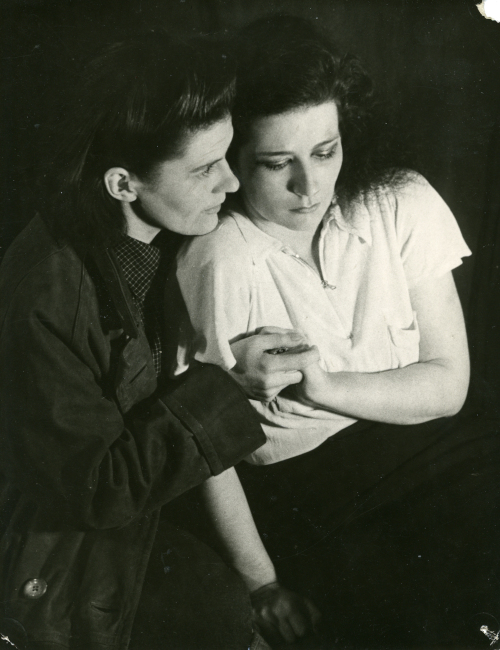
By the end of the war over 40 women refugees had worked at the theatre, some of them over several years. How many of them managed to rebuild their careers as artists in the post-war world is not recorded these archives, though for a lucky few, at least, the Laterndl was a stepping stone to a career in the performing arts in the UK, such as the BBC. What is clear is that, despite the hardship and pain of their situation, women played a central role in the theatre, helping to keep alive the hopes of the community in a better post-war world and an independent and democratic Austria.
Dr Clare George
Archivist (Martin Miller and Hannah Norbert-Miller Trust)
Research Centre for German and Austrian Exile Studies
Institute of Modern Languages Research
University of London School of Advanced Study
Senate House Library
Related
Martin Miller and Hannah Norbert-Miller Archive
Browse all Institute of Modern Languages Research collection descriptions on the Archives Hub
All images copyright Institute of Modern Languages Research, University of London. Reproduced with the kind permission of the copyright holders.

